One of the more young berry varieties is the jostaberry, which can be cultivated in mild locations in any garden without any major problems. With us you will learn everything about the correct planting, care and use.
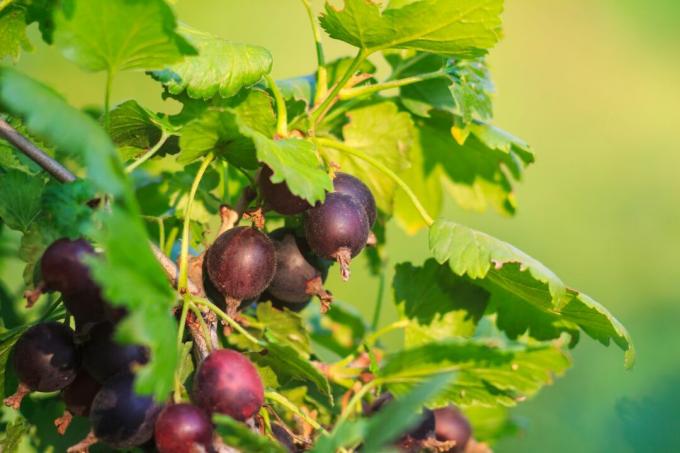
What does a jostaberry look like? What conditions does it impose on the location? When should you cut the so-called yokeberry and can you multiply it yourself? We give you answers and the best tips for everything to do with the yolk.
contents
- Jostaberry: origin and properties
- The tastiest jostaberry varieties
- Planting wildflowers: location and procedure
-
The right care
- watering and fertilizing
- Cut Jostaberry
- Jostaberry does not bear fruit or bloom
- Common diseases and pests
- Propagating jostaberries
- Harvest jostaberries
- Ingredients and use of jostaberries
Jostaberry: origin and properties
The Jostaberry (Ribes x nidigrolaria) was bred several times: in 1922 in Müncheberg, in the mid-1950s in Dresden-Pillnitz and at the same time a third time in Cologne-Vogelsang. The breeders sometimes used different species as parents, but they all called the result Jostabeere or Jochelbeere. In fact, the various species hybrids are very similar: in terms of appearance and taste, they all stand somewhere between their parents, the black currant (
Ribes nigrum) and the gooseberry (Ribes uva crispa) and some related wild species. Jostabeere is also known by names such as bastard currant, rigatze or yogurt berry. Like its parent plants, the special berry belongs to the gooseberry family (Grossulariaceae).Their typical properties appear like a mixture of black currant and gooseberry: the jostaberry bush grows about 2 m high and just as wide thornless and yields fruits that resemble oversized blackcurrants or small gooseberries with a translucent deep black-purple skin appearance. New shoots arise either at the base or at mid-height. Their three-lobed, rounded and notched leaves are also a reminder of their family affiliation. However, you will look in vain for the typical smell of blackcurrants. The flowers are similar to those of the gooseberry, solitary or in pairs on short shoots on perennial wood and appear in striking purple between April and May. The flowers are self-fertile: you do not need a second variety in the area for optimal pollination.
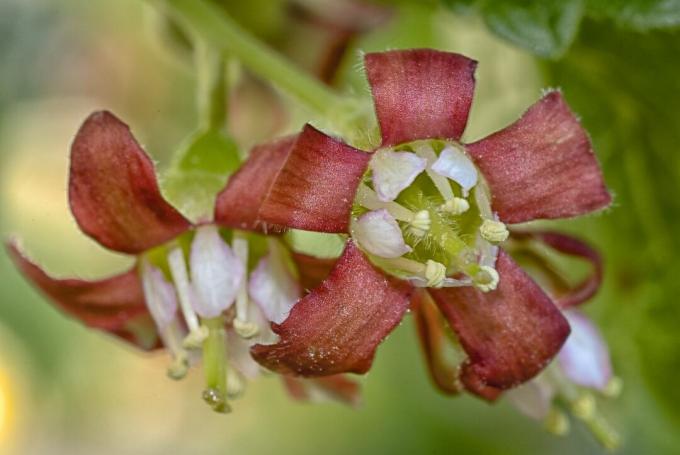
The tastiest jostaberry varieties
Even if the yolk has not been around for long, some varieties with different properties have become established in recent years:
- Jostaberry ˈJostaˈ: The best-known variety is characterized by a strong, rather upright growth. Their fruits are ripe from the end of June and taste sweet and sour with a strong aroma. It tastes very good raw from the stump, as well as jam or jelly. It is resistant to currant gall mite, gooseberry powdery mildew, columnar rust and leaf fall disease.
- Jostabeere ˈJochelineˈ: A late-flowering and late-ripening variety that produces fruit with an intense blackcurrant aroma. Suitable for locations prone to frost. Weak-growing shrub with high susceptibility to powdery mildew and columnar rust, less susceptible to currant gall mite infestation.
- Jostaberry ˈJograndaˈ: Small, very robust variety with late-ripening, large berries. Flowers late and is therefore particularly suitable for frost-prone locations. Slightly susceptible to powdery mildew, columnar rust and the currant gall mite.
- Jostabeere ˈJostineˈ: A very vigorous variety with a rather upright habit and early flowering with medium ripening of the berries. Rather low yield with smaller berries that have a particularly intense aroma. Largely tolerant to powdery mildew, columnar rust and currant gall mite.
- Jostaberry ˈRiköˈ: Vigorous, very robust variety with relatively large berries from Hungary. Higher susceptibility to powdery mildew and columnar rust. No problems with the currant gall mite.
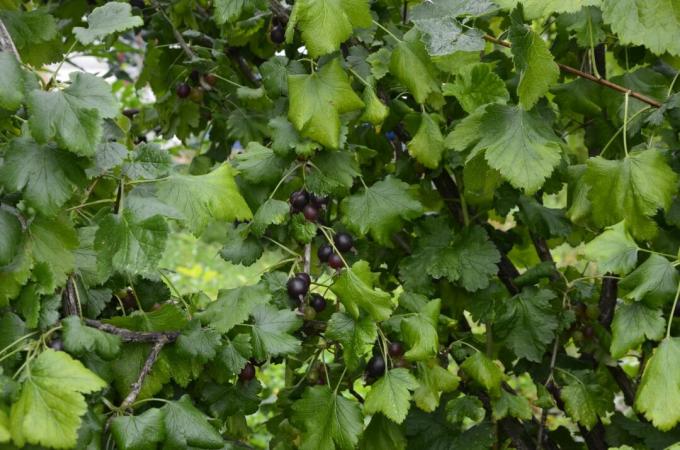
Planting wildflowers: location and procedure
As far as its cultivation is concerned, the jostaberry is similar to the black currant in many respects. The most important thing is to choose the right location so that the shrub can grow optimally. A place with a lot of sun is advantageous for the ripening of the fruit, but windy and frost-prone locations should be avoided. In places prone to frost, there is a risk that pollination of the early blossom will not occur and that it will trickle down. The jostaberries ˈJograndaˈ and ˈJochelineˈ are particularly suitable for such locations, as they bloom relatively late. Individual flower buds are rejected because they were not pollinated by insects. Even when the fruit is full, the jostaberry reacts sensitively to wind. The demands on the substrate are lower: A medium-heavy, humus-rich, nutrient-rich and slightly acidic soil already offers optimal conditions.
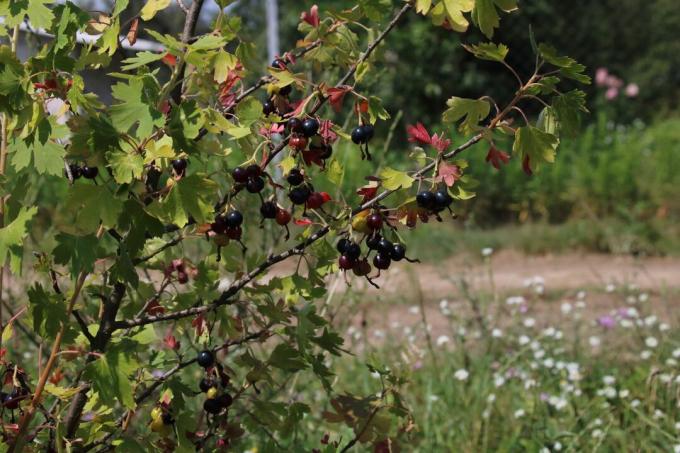
The best time to plant the jostaberry is late autumn, once it has lost its leaves. A planting hole should be dug about 2 to 3 m away from other plants to give the jostaberry enough space for healthy growth. The size of the planting hole is always based on the root ball of the shrub and should be dug up to twice the size of the root ball. The plant can then be placed in it and the planting hole filled with soil. The Jostaberry should be planted about as deep as it was previously in the pot - but the Jostaberry can also be planted a little deeper. Immediately after planting, the three to five strongest shoots should be selected as the main shoots and left on the bush. The remaining shoots are cut out completely and the selected main shoots of the jostaberry are shortened to about 30 to 40 cm, or two to three eyes. Finally, the plant should be watered thoroughly to ensure good soil contact and thus healthy growth.
Summary: Plant Jostaberry:
- It is best to plant the jostaberry in late autumn as soon as it has lost its leaves.
- Ensure a planting distance of 2 - 3 m to other plants.
- Dig a planting hole twice the size of the root ball.
- Put the jostaberry in the planting hole and fill it up with soil.
- Select the 3 - 5 strongest shoots as the main shoots and cut back the remaining shoots close to the ground.
- Shorten the main shoots to about 2 - 3 eyes, or 30 - 40 cm in length.
- Water the plant thoroughly.
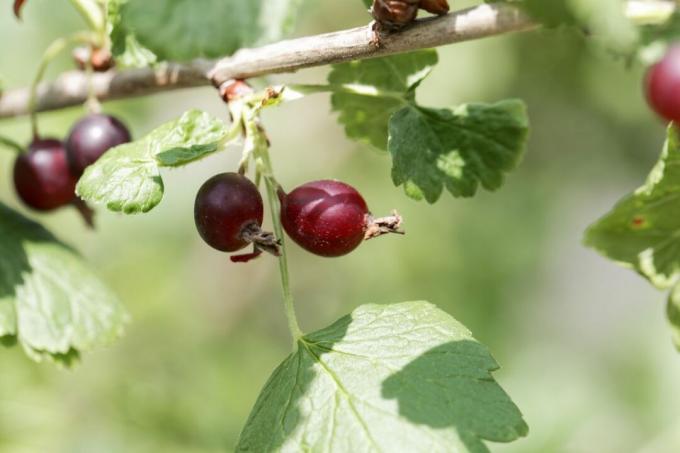
Plant jostaberries in the tub: If you don't have a garden, you can also grow the wild berry on the balcony or terrace in a bucket. Since the plant is a shallow root, a sufficiently large bucket should be chosen because of the wide root system. A nitrogen-rich soil is advantageous for cultivation in a pot, as the young plant is optimally supplied from the start and can develop healthily. The jostaberry also has an increased nitrogen requirement compared to other berries. For example, our nutrient-rich Plantura organic tomato & vegetable soil Thanks to its high compost content, contains all the important nutrients that the young plants need in the early days needed after planting and at the same time is able to absorb a lot of water thanks to the coconut fibers it contains to save. It is best to cover the soil surface with a layer of mulch to keep moisture in the soil.
The right care
With a few simple steps, the Jostabeere can easily be brought through the year. The right water and nutrient supply is particularly important. But also pruning and pest control should not be neglected to keep the plants healthy and productive.
watering and fertilizing
Thorough watering of the soil is important for an even yield, especially during prolonged drought. The soil should not dry out between waterings, but should remain moist as evenly as possible. By applying a mulch layer grass clippings, compost, pine bark or leaf litter can reduce evaporation so that the soil stays moist more evenly. Our Plantura organic pine bark for example, decomposes slowly, so you rarely need to re-mulch. The sustainably produced pine bark still looks attractive in the bed for a long time.
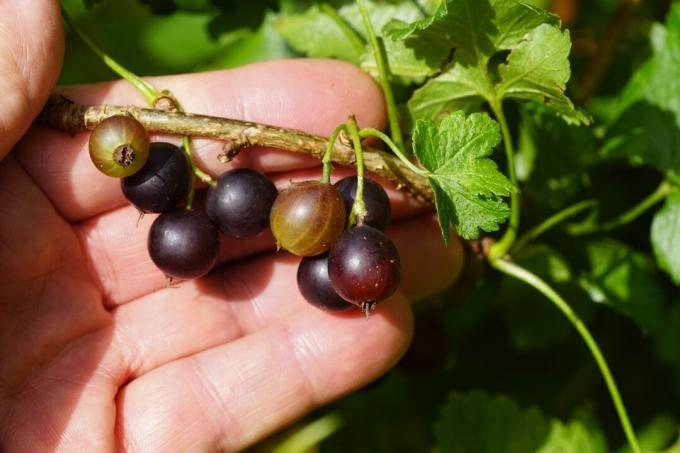
In order to conserve the nutrient resources of the soil, the first fertilization is necessary at the latest two years after planting due to the high requirement of the jostaberry. It is advisable to use an organic long-term fertilizer that supplies the plant with nutrients over the entire vegetation period. Jostaberries are sensitive to chlorine and have an increased need for potassium for the healthy development of their fruit. Due to the early growth, the first fertilization should take place at the beginning of February. For this we recommend the use of a primarily organic long-term fertilizer, such as ours Plantura organic universal fertilizer. This is particularly gentle on plants, soil and garden animals and is made up of natural raw materials. This actively conserves resources and saves energy during production compared to mineral fertilizers.
Cut Jostaberry
Pruning the plant is part of the regular care of the fully grown jostaberry. As soon as the jostaberry bush is about four years old, older shoots with a sharp Secateurs can be withdrawn close to the ground so that there are only six to eight strong main shoots remain. Perennial shoots are particularly important for fruit formation and should remain on the plant, while branches that are too old can be cut out without hesitation. When pruning, old shoots with gray bark are removed so that the shoots remaining on the bush are no older than three years. In addition, weak branches can be removed annually. The best time for this is immediately after harvest or alternatively in late winter, just before the new budding begins.
Tip: In contrast to other currant bushes, the yolk does not necessarily have to be pruned annually, as it develops its fruits on short shoots on perennial wood. However, pruning every year promotes a good yield and makes harvesting easier.
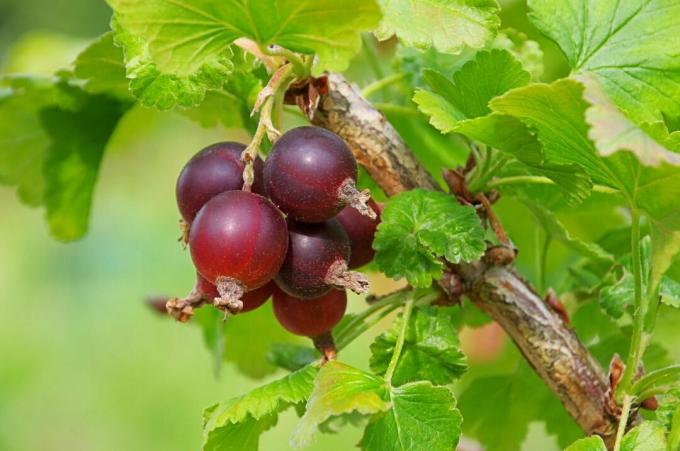
Cut the Jostabeere standard: Regular pruning is important for Jostabeer standard trees to maintain their shape. All hanging branches should be cut first, as well as upright, bare branches. For the aesthetics of the standard, all protruding branches should also be shortened so that they end evenly with the other branches. To cut the Jostabeere standard, you should always make sure you have sharp and clean pruning shears to minimize the risk of disease infection.
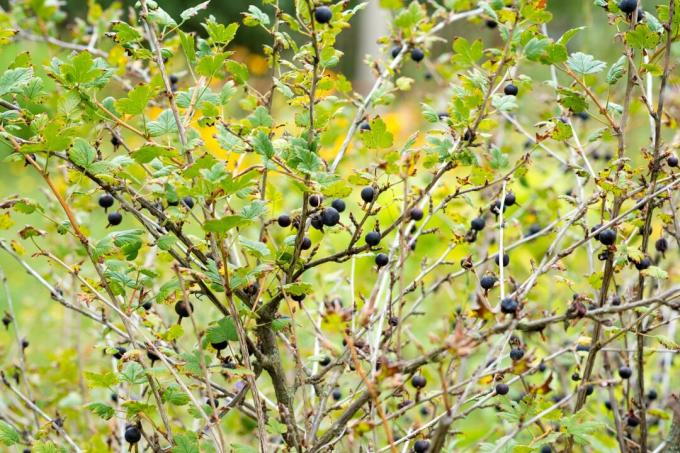
Summary: Caring for Jostaberries
- Water the jostaberry during vegetation so that the soil is always slightly moist.
- A mulch layer can improve the soil climate and reduce evaporation.
- Fertilize the Jostabeere after 2 years at the latest with a high-quality long-term fertilizer such as ours Plantura organic universal fertilizer.
- The plants should be thinned out in late winter after harvest or before the start of vegetation: The shoots should be 1, 2 or 3 years old, older shoots are removed close to the ground.
Jostaberry does not bear fruit or bloom
If the jostaberry does not bear fruit or does not flower, there can be several reasons. It often has these causes:
- Freshly planted: In the year after planting, the jostaberry often does not bear any flowers or fruit - there is no need to panic, the shrub will start to produce flowers and fruit as early as the next year.
- late frosts: If late frosts occurred during the sensitive phase of flower formation, it may be that the flowers have frozen and the Jostabeere therefore does not bear - as soon as frosts are announced, the Jostabeere should be covered with fleece or brushwood to be protected.
- Lack of pollination: If the weather is too cold, it can happen that pollinators such as bees and bumblebees do not fly or fly only a little and the jostaberry is not pollinated.
- Wrong location: The jostaberry will not grow well and will not form flowers or fruit in a location that is too dark or too windy - you should replant the jostaberry.
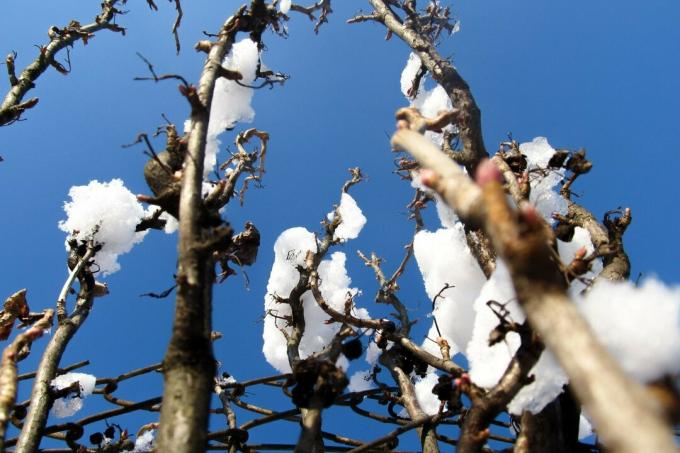
Common diseases and pests
In general, the jostaberry is very robust and is only attacked by diseases and pests in extremely rare cases. Most varieties are just as tolerant of diseases such as gooseberry powdery mildew and leaf fall disease as they are of currant gall mite. Only aphids can attack the jostaberry, but if the infestation is weak, you can wash it off the plant with a jet of water. If the infestation is stronger, you will find successful methods in this article Control of aphids.
If the jostaberry shows yellow leaves, this is usually due to excessive fertilization or too high a chloride content in the fertilizer. In this case, fertilization should be suspended for a longer period of time and switched to primarily organic fertilizers.
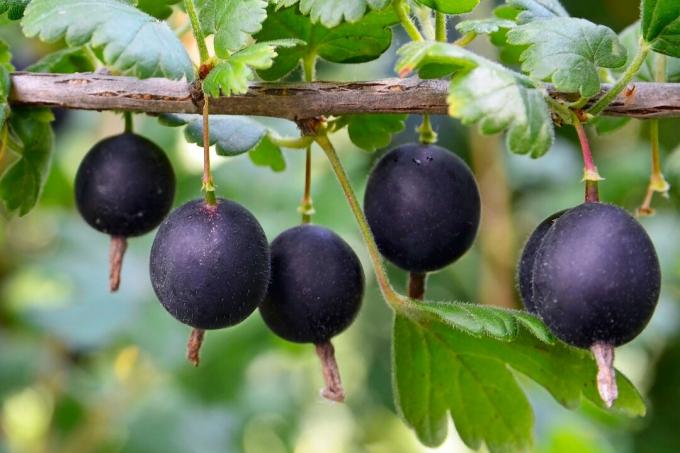
Propagating jostaberries
In principle, jostaberries can be propagated in two ways: by cuttings and by sinkers. We would like to briefly introduce both variants to you:
Propagating Jostaberries by cuttings: Jostaberries can be propagated quite easily by cutting cuttings. Between September and April, about 15 cm long sections of the annual wood can be cut out of the bush. Above all, strong, healthy shoots from the outer area are particularly suitable as sticks because they have received a lot of light during their development and are not excessively growing in length had to. Half of the sticks can then be placed in a container filled with soil and watered thoroughly. The healthy root development of the sticks can be supported by using a high-quality seed soil such as our Plantura Organic herbal & seed soil be promoted, since the root growth is additionally stimulated by a specifically reduced nutrient content and thus vital plants are ensured. In addition, we do not use peat in our growing soil, which protects the environment. In a warm, bright place with about 12 to 16 ° C, the cuttings can finally form roots before they are planted out the following year.
Multiply Jostabeere by lowering: Another easy way to propagate the jostaberry is to use lowering plants. For this purpose, individual shoots are best led to the ground in an arc at the beginning of the growth period in spring and about 30 to 50 cm below the shoot tip with a stone, a piece of wood or wire on the ground fixed. The shoot can then be covered with soil. By autumn, the sinker forms roots and begins to provide itself with water and nutrients. The sinker is finally separated from the mother plant and planted separately.
Tip: If the bark of the lowered shoot tears, it's not a problem. Roots are even formed particularly quickly on the wound.
Harvest jostaberries
Harvesting of early-ripening varieties can begin around mid-June. However, it is important to ensure that not all the fruits are harvested from the bush at the same time, as they only ripen one after the other. The jostaberry harvest period extends over several weeks. Jostaberries grow particularly firmly on the bush and should therefore be picked with care so as not to damage the plant. It is therefore best to harvest them individually and by hand.
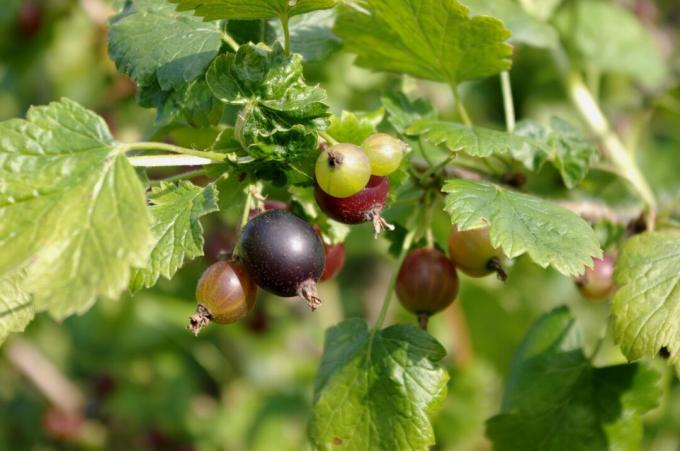
Ingredients and use of jostaberries
Jostaberries are similar in taste to black currants, but are much sweeter. The berries can be eaten raw or processed. Jostabeer jams and jellies are particularly popular, as are Jostabeer schnapps, liqueur and juice. Jostaberries are great for freezing or canning for later consumption or processing. When picked, jostaberries can only be stored for a short time and should therefore be used as soon as possible. However, they can remain on the bush without hesitation for two to three weeks, even when fully ripe, without losing quality or spoiling.
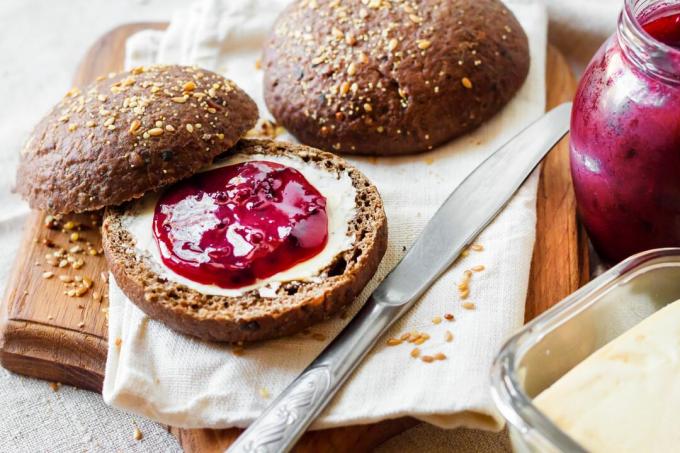
How healthy are jostaberries? Jostaberries contain a lot of vitamin C. According to studies, the daily vitamin C requirement can be covered with just 100 g of fresh jostaberries. If the berries are boiled down or processed into Josta jam, a large part of the vitamin C is lost. In addition, the berries are rich in minerals such as calcium, potassium, magnesium and sodium. They are also said to have an antioxidant effect.
Does your heart beat for extraordinary berries? Then also read our article about planting, pruning and caring for the exotic mulberry tree.
